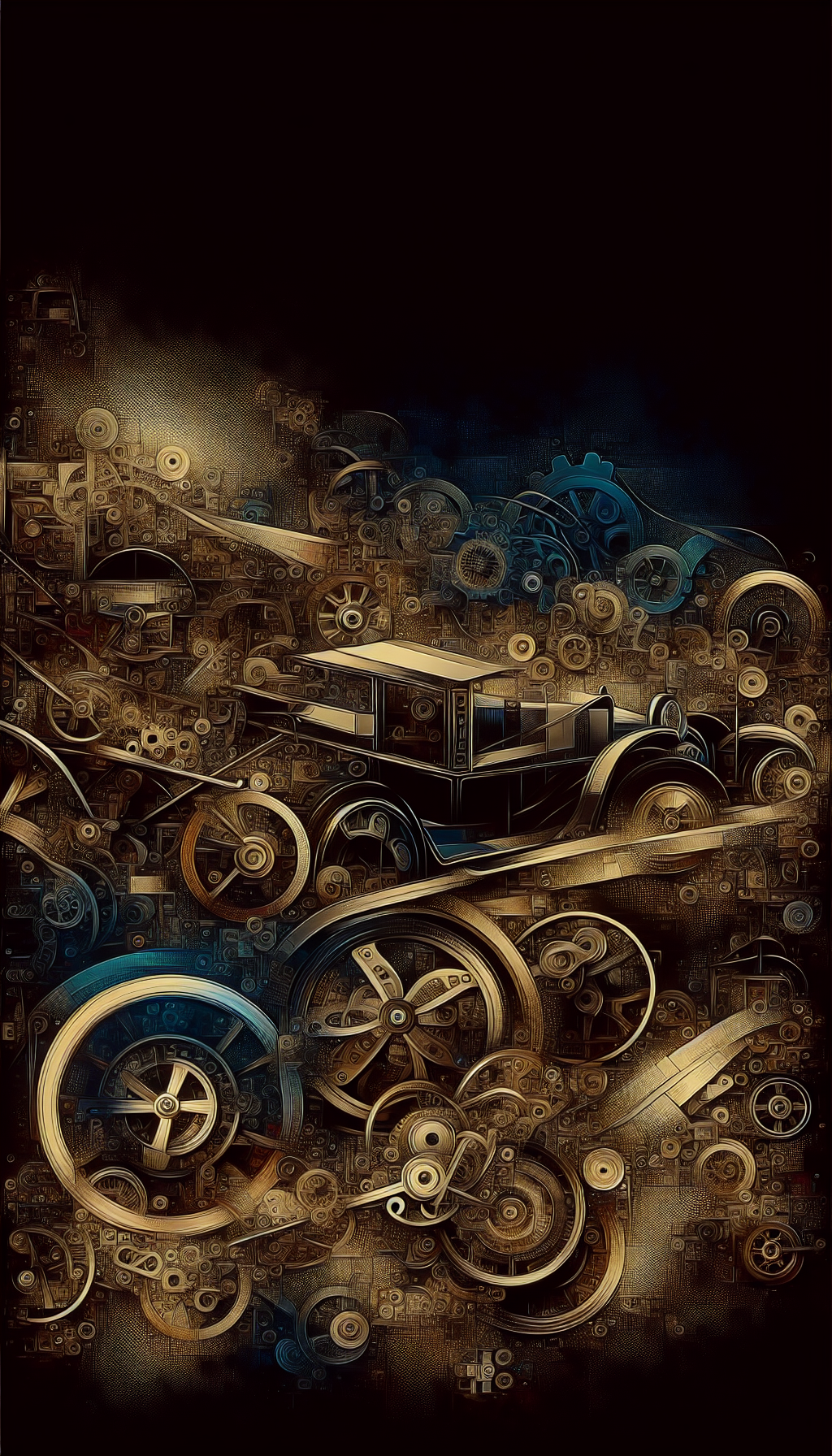Yaacov Agam Limited Edition Print
Yaacov Agam’s limited edition prints sit at the intersection of optical science and visual poetry. For collectors, appraisers, and enthusiasts, differentiating a true limited edition from posters and later reproductions—and understanding how condition and provenance influence value—is essential. This guide focuses on identifying, authenticating, valuing, and caring for Agam serigraphs and Agamographs, the formats most frequently encountered in the marketplace.
What Makes an Agam Print Distinct?
- Kinetic and optical lineage: A pioneer of Op and kinetic art, Agam creates images that change as the viewer moves. His prints often present “transformations”—color shifts, geometric reconfigurations, and layered patterns that reward multiple viewpoints.
- Common print mediums:
- Serigraphs (silkscreens) on fine art paper. These usually feature dense, saturated layers of color, sometimes with palpable ink relief from multiple screens.
- Agamographs (lenticular works), which use a ribbed lens to interlace multiple images. As you shift position, one image morphs to another, producing a kinetic effect without mechanical parts.
- Less common: lithographs and mixed-media multiples; however, most collectible limited editions you’ll see are serigraphs or Agamographs.
- Publishers and period context: Quality editions were issued by respected outfits such as Galerie Denise René (Paris) and Circle Fine Art (U.S.). Editions from the 1960s–1980s often command special attention, though strong works were issued well into later decades.
- Aesthetic hallmarks: Repeating geometric modules, meticulous color gradations, and structured symmetry. Titles frequently reference transformation or movement—“Double Metamorphosis,” “Visual Melody,” and related themes.
Understanding the medium matters: serigraphs are paper-based fine prints; Agamographs are lenticular plastic works (and thus have unique condition risks). The medium, publisher, and edition parameters combine to shape value and conservation needs.
Identifying Genuine Limited Editions
A legitimate limited edition print by Agam typically presents a cluster of consistent attributes. Look for these, and note any inconsistencies.
- Signature: Most authentic serigraphs are pencil-signed “Agam” at lower right. The signature is characteristically confident, typically in all caps or stylized script; the key is presence of a hand-applied pencil signature on the margin rather than a printed facsimile.
- Edition notation: At lower left, expect a fraction such as 34/99 indicating the individual number and total edition size. Additional notations you may encounter:
- AP or A/P (Artist’s Proof), often a small subset (e.g., 10–25 proofs depending on the edition).
- EA or E.A. (Épreuve d’artiste), French for artist’s proof.
- HC or H.C. (Hors Commerce), not for commercial sale; typically gifted or used for exhibitions.
- PP (Printer’s Proof). Proofs can be more desirable, but their market premiums vary by title and date.
- Paper, watermark, and blindstamps: High-quality serigraphs are on fine wove papers (e.g., Arches, Rives). Hold to light to check for a watermark. Many editions carry a blindstamp for the publisher or printer. A missing watermark or blindstamp is not automatically disqualifying, but their presence supports authenticity.
- Printing characteristics: Under magnification, a serigraph shows solid fields of color without CMYK halftone dots typical of offset posters. Thick, layered inks and crisp edges where colors meet are good signs.
- Publisher labels and documentation: Gallery labels (back of frame), original invoices, and certificates of authenticity from recognized publishers or galleries materially strengthen provenance.
- Agamographs specifics:
- Look for a signed element—either on the margin, on the verso label, or sometimes on the lens or mount edge.
- The lenticular lens should produce a clean “flip” or transition, not a muddy overlay. Turning the work slowly should reveal distinct images.
- Manufacturing quality varies by period; premium editions tend to have clean lamination without bubbles, even spacing of the lens ridges, and precise mounting.
Red flags and common pitfalls:
- Offset posters and open editions: Exhibition posters often include text, printer credits, or a date line in the margin; they are typically unsigned and unnumbered. Some posters have faux signatures printed in the image—these are not equivalent to a pencil signature in the margin.
- Inconsistent numbering: A fraction like 163/99 makes no sense; similarly, a number outside the edition size suggests alteration.
- Fresh signatures on old posters: A contemporary hand-signature on a vintage poster still does not convert it into a limited edition print. It remains a poster with a signature.
- Overly glossy paper for serigraphs: High-gloss, thin paper can suggest poster stock rather than fine art paper.
When in doubt, gather as many corroborating elements as possible: signature, edition mark, paper and printing quality, blindstamps, publisher documentation, and verifiable sales history of the exact title.
Condition and Conservation: What Appraisers Look For
With Agam works, condition can swing value significantly because color intensity and kinetic effect are central to the art.
Paper serigraphs—typical risk factors:
- Light fade: Prolonged exposure bleaches saturated hues, especially reds and blues. Fading lowers value and is irreversible.
- Toning and mat burn: Acidic mats and backing boards cause brown lines near the window opening. This can often be mitigated by conservation treatment.
- Surface abrasion and scuffing: Heavy silkscreen layers can scuff; avoid dry cleaning attempts without a conservator’s advice.
- Cockling, ripples, and creases: Humidity fluctuations and improper framing cause undulations. Professional humidification and flattening can help.
- Paper defects: Foxing (brown spots), tears at the margin, and hinge stains from non-archival tapes are common and affect desirability.
Agamographs (lenticular) and mixed-media multiples—typical risk factors:
- Lens scratches: The ribbed plastic lens is prone to scratching; this visually disrupts the image shift.
- Delamination and bubbling: Adhesive failure causes separation between the printed interlaced image and lens. This is a serious condition issue and often difficult to remedy.
- Warping and bowing: Heat and humidity can distort the plastic substrate. Proper mounting mitigates risk.
- Haze and clouding: Aging plastics can develop surface haze; do not apply solvents. Consult a specialist familiar with lenticular restoration.
Framing and display best practices:
- Use UV-filtering glazing; museum acrylic is preferred for large works and anything lenticular. For Agamographs, avoid direct contact between the lens and glazing; use spacers.
- Maintain stable environment: 40–55% relative humidity, moderate temperature, and zero direct sunlight.
- Acid-free, lignin-free mats and backings. For serigraphs with heavy ink, consider float mounting with edge supports to avoid surface pressure.
- Never roll thick-ink serigraphs; layers can crack.
Conservation costs (ballpark, vary by region):
- Paper cleaning and flattening: modest to moderate cost depending on severity.
- Mat burn reduction and tear mends: moderate.
- Lenticular repairs: often specialized and costly; sometimes not economically viable relative to market value.
An appraisal will weigh not only the presence of damage but its visibility at normal viewing distance, its impact on the kinetic/optical effect, and whether conservation is feasible without aesthetic compromise.
Valuation Drivers and Market Trends
Agam’s market has benefited from sustained interest in Op and kinetic art, museum exhibitions, and a broad collector base. That said, prices vary widely depending on the specific work and medium.
Primary value drivers:
- Edition size and type: Lower edition sizes (e.g., 99, 125) tend to be more desirable than large runs. Artist’s proofs and HC can command a premium, though not always.
- Medium and complexity: Large, multi-color serigraphs with intricate transformations, or compelling Agamographs with clean, distinct shifts, generally bring stronger results.
- Date and publisher: Earlier works and those associated with esteemed publishers (e.g., Galerie Denise René) often outpace later, more commercial releases. Circle Fine Art editions are widely collected; condition and title specificity matter.
- Condition and color strength: Crisp, unfaded color and excellent physical integrity significantly lift value.
- Title desirability and imagery: Signature motifs and visually dramatic transformations attract more bidders.
- Provenance and documentation: Gallery invoices, exhibition history, and COAs reduce transaction friction and support confidence.
Market ranges (indicative only; verify current comparables):
- Serigraphs: commonly trade from low four figures for smaller or later examples to mid-four figures for larger, earlier, or especially strong images in excellent condition.
- Agamographs: a broader range; modest-sized examples can align with stronger serigraphs, while large, visually arresting pieces in fine condition can reach higher levels. Condition is the swing factor.
To refine value, use recent (last 12–18 months) sales of the exact title, edition type, and similar condition, rather than relying on asking prices. Appraisers will triangulate auction results, dealer sales, and private transactions where available.
Buying, Selling, and Appraisal Strategy
Buying tips:
- Inspect in person when possible. If remote, request high-resolution images of signature, edition number, blindstamps, paper edges, the verso (for watermarks and labels), and raking-light shots to evaluate ink layers and surface.
- Confirm edition details match known records: title spelling, paper size, image size, edition size, and publisher.
- Beware of bargain “limited editions” that are actually signed posters—absence of a true edition fraction and presence of halftone dots are giveaways.
- Factor framing quality into your budget. Poor framing may conceal condition issues or cause them.
Selling tips:
- Gather all documentation: invoices, COAs, correspondence, labels, and any restoration reports.
- Consider conservation if the work suffers from reversible issues that materially depress value (e.g., acidic mat burn). A pre-sale consult with a conservator can pay for itself.
- Choose venue by price tier and urgency: reputable auction houses for broader exposure and price discovery; specialist galleries for curated placement; private sales for discretion and control. Understand fees, reserves, and shipping/insurance obligations in each channel.
- Photograph smartly: neutral light, color-true images, and detail shots. For Agamographs, provide short videos showing the image change.
Appraisal essentials:
- Provide the appraiser with clear images, exact measurements (sheet and image), medium confirmation, edition details, and framing information.
- Share provenance and any past valuations or conservation records.
- Request the intended use: insurance (replacement value) vs. fair market value (transactional). Methodologies differ.
Quick Appraisal and Care Checklist
- Verify a pencil signature “Agam” at lower right and a proper edition fraction at lower left.
- Check for fine art paper, watermarks, and publisher/printer blindstamps (serigraphs).
- Distinguish serigraph vs. poster: solid color fields vs. CMYK dots; presence of numbering.
- For Agamographs, inspect lens clarity, lamination integrity, and the crispness of the image shift.
- Assess color strength under neutral light; watch for fading or toning.
- Inspect the verso: look for stains, non-archival tape, labels, or water damage.
- Review frame materials: UV glazing, acid-free backing, and proper spacers.
- Compile documentation: invoices, COAs, emails, and gallery labels.
- Research recent sales of the same title, edition, and size within the last 12–18 months.
- If issues are found, consult a qualified paper conservator or specialist before sale.
FAQ
Q: What is an Agamograph, and is it considered a print? A: An Agamograph is a lenticular work that interlaces multiple images beneath a ribbed lens, producing a kinetic shift as you move. It is a type of editioned multiple and is collected alongside Agam’s paper serigraphs. Condition and manufacturing quality are critical to value.
Q: Are artist’s proofs (AP/E.A.) more valuable than numbered editions? A: Often, but not universally. APs are scarcer and can carry a premium, especially for sought-after titles. However, buyers typically prioritize image, condition, and color over proof status alone. Premiums vary by edition and market demand.
Q: How can I tell a signed poster from a limited edition serigraph? A: A genuine serigraph will be pencil-numbered (e.g., 45/99) and pencil-signed in the margin, with solid color fields (no halftone dots under magnification), often on fine paper with a watermark or blindstamp. A poster may have a printed signature, halftone dots, thinner/glossier paper, and no edition fraction.
Q: Should Agamographs be framed under glass or acrylic? A: Use UV-filtering museum acrylic with spacers to prevent contact with the lenticular surface. Avoid standard glass for large works to minimize breakage risk and reflections. Maintain stable humidity and temperature, and never clean the lens with solvents.
Q: Do COAs guarantee authenticity? A: A COA helps, especially if issued by the original publisher or a respected gallery, but it is not a substitute for physical evidence (signature, numbering, printing characteristics) and provenance. Appraisers weigh the COA alongside the work’s tangible attributes and market comparables.
With the right identification steps, careful condition assessment, and reliable market data, you can confidently evaluate a Yaacov Agam limited edition print—whether you’re building a collection, preparing for sale, or seeking an insurance appraisal.



